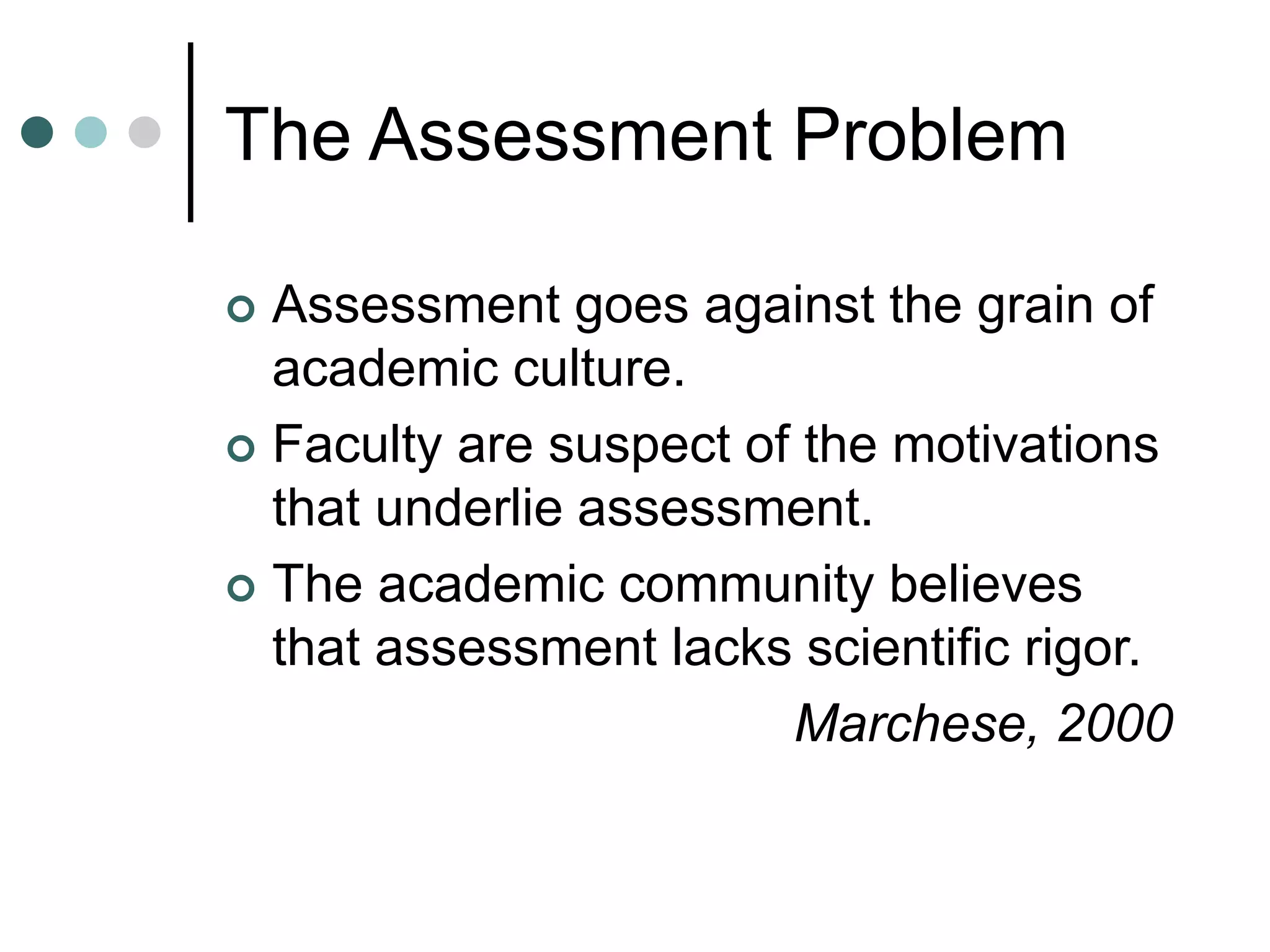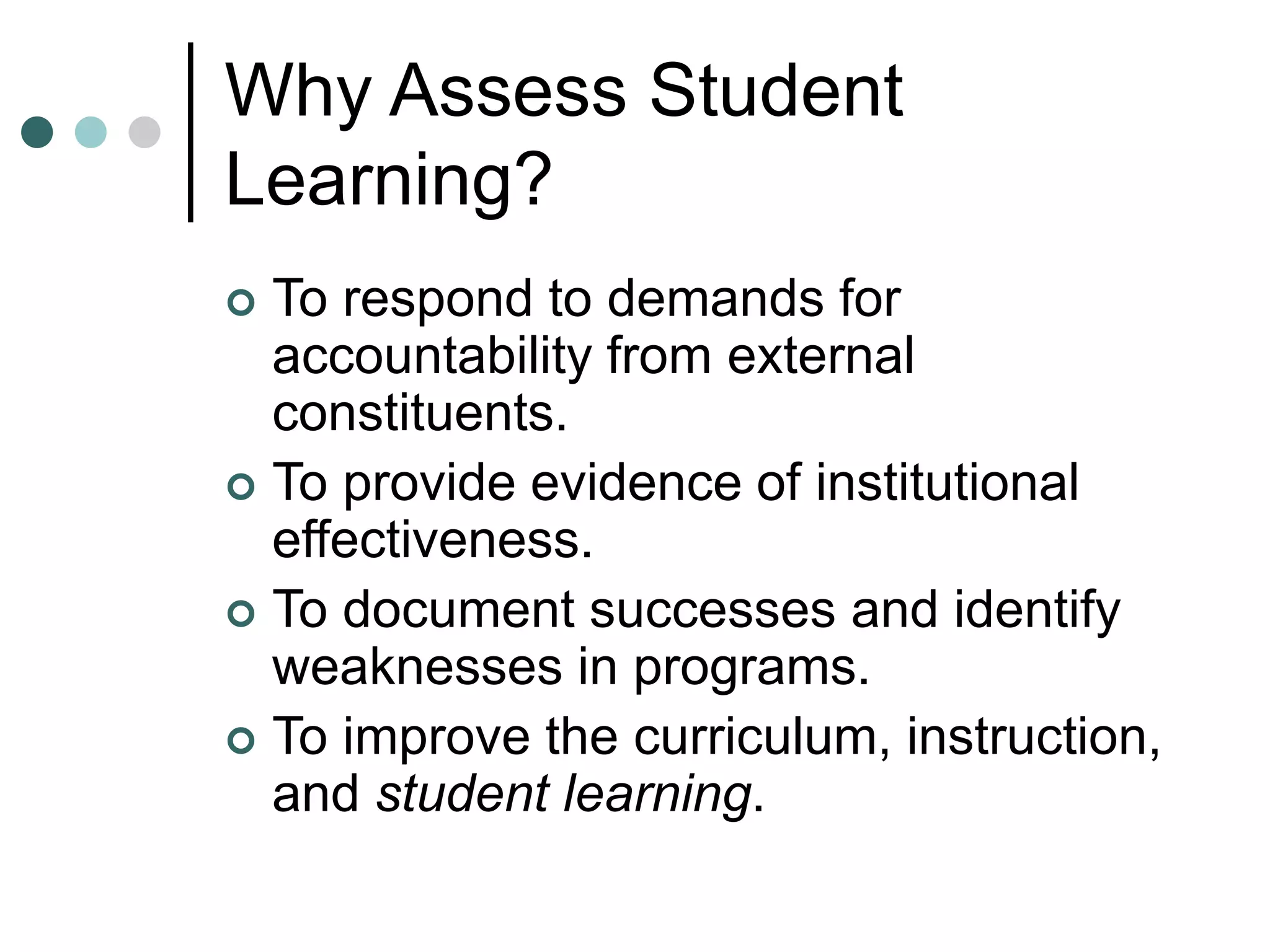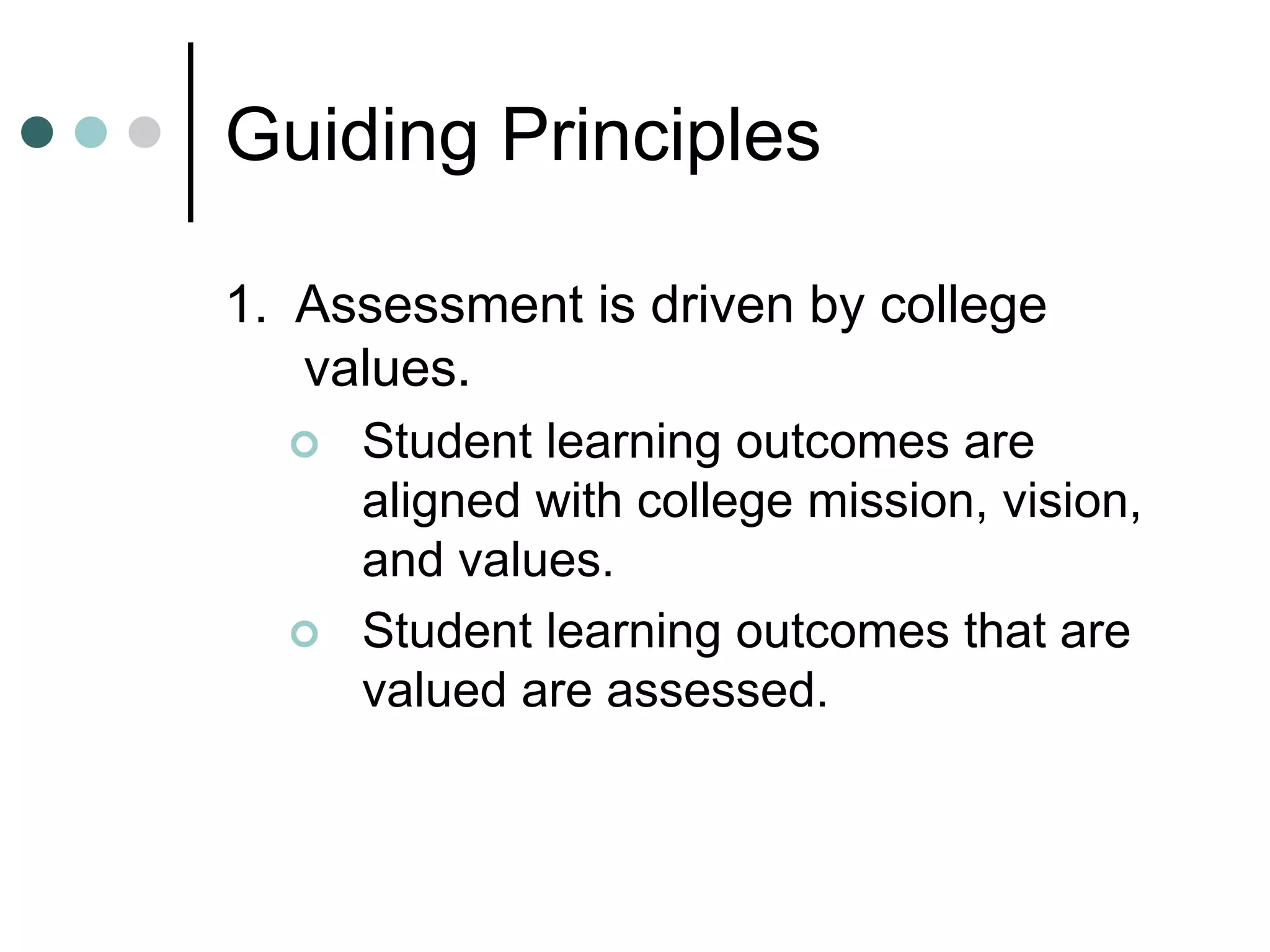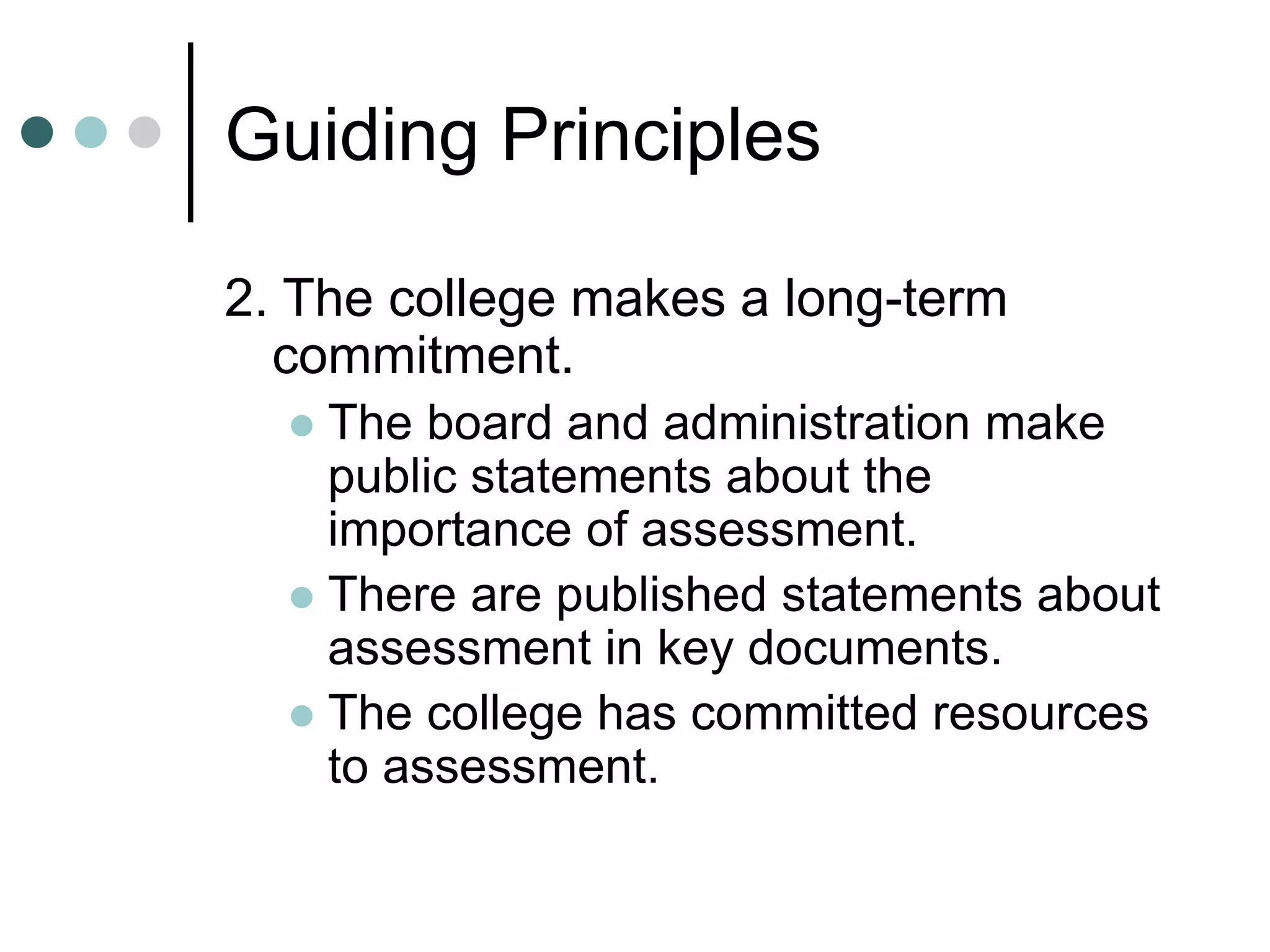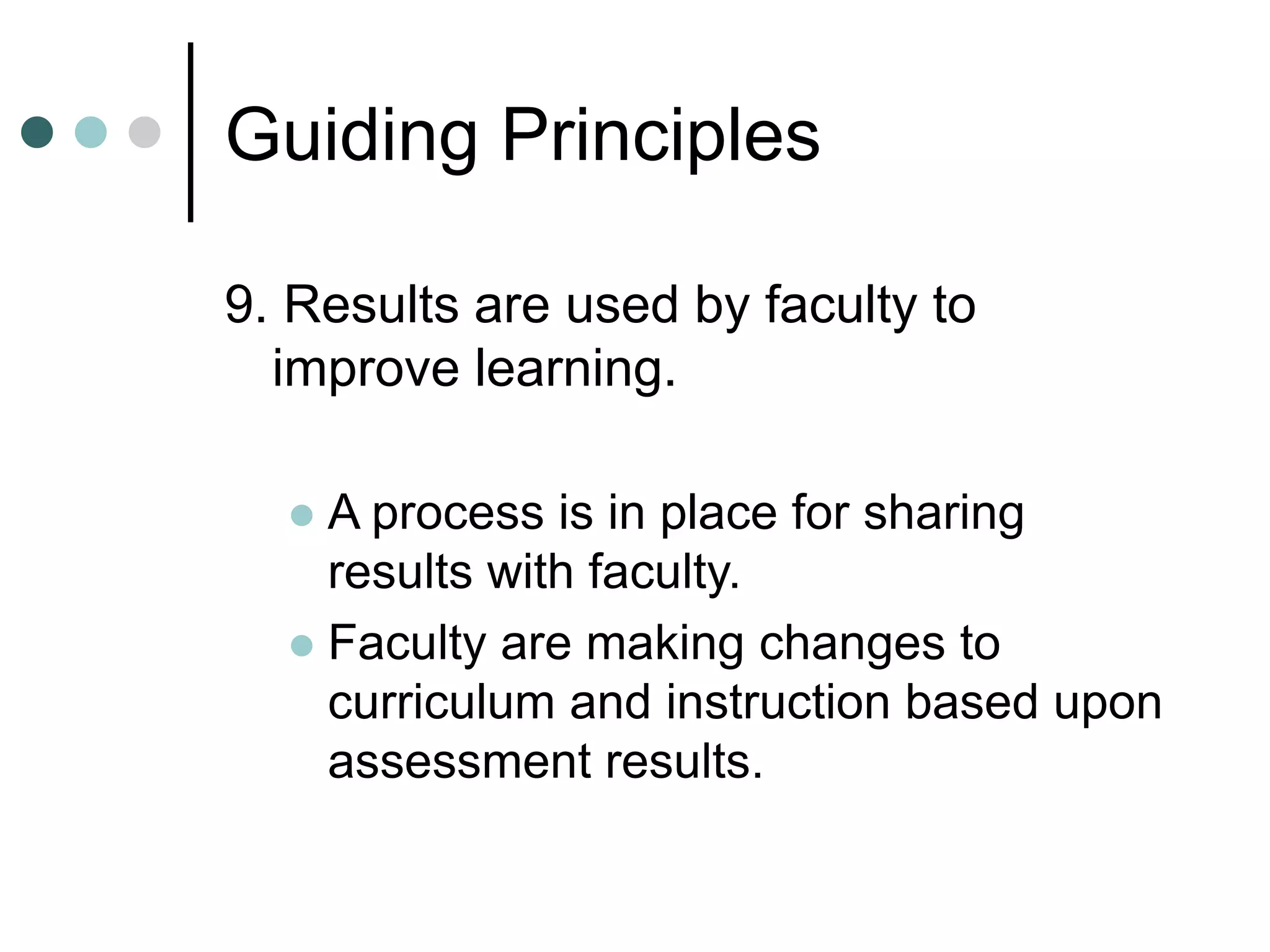This document discusses assessment and its role in the learning college. It provides 10 guiding principles for assessment in the learning college, including that assessment should be driven by college values, have long-term commitment and faculty leadership, clearly define learning outcomes, use sound research methods, and link to college planning. Assessment results should be used by faculty to improve learning. Overall, the document advocates for student outcomes assessment as a way to place learning at the center of the academic program and student experience in the learning college.



